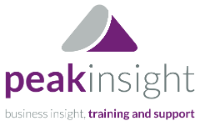Starting with the end in mind – Induction of employees
Placing the employee at the centre of his or her induction is key to ensuring that they are fully involved in their induction process, have a dynamic experience and that it does not feel as if it is something that is being done to them.
The purpose of induction depends upon the business’s ability to recruit and retain excellent people at every level. An effective induction should provide clarity on expectations regarding performance, can make the difference between retaining or losing good staff, is likely to shape the inductee’s ability to do the job successfully
will shape their perception of their role and the business.”Failing to plan is planning to fail – with induction these words ring very true! To enable new team members with their transition into their new role quickly and effectively, they should be provided with a planned induction programme will run concurrently with the probation period, usually over a three month period.
Planning an induction programme should begin once the candidate has accepted the offer of employment and a start date has been agreed. It is important to remember that induction is not a one-off event. It may take up to six months to fully conclude and should be viewed as an ongoing development which feeds into the probationary process, ongoing discussions through the year and eventually the annual performance review.
The emphasis on the induction programme is to identify what needs to be done. As well as agreeing on what they need to do, the new team member will need to understand how well things need to be done. Avoid over-loading as too intensive an information-giving session or period is likely to be ineffective. It is important to prioritise what information you need to provide and when they need to know each piece of information. Remember to focus on what their work objectives are and expected standards of performance.
Ask the employee on their first day or preferably before they arrive, how they best learn and adapt the programme to meet these. Remember that people learn in different ways. There are lots of online tests that you can use to help them with this. These are are a couple of examples of these free tools Working Styles Questionnaire See my Personality. Involve other people, this will help build other team members self-esteem as well as a chance for them to get to know each other.
Remember that one size will not fit all. The length and content of the induction programme will vary depending on the complexity of the new employee’s role and their previous experience and background.
Induction checklist
1. Introductions
Meet your line manager/supervisor
Meet your induction colleague/buddy (if assigned one)
Meet your team members
Meet your mentor (if relevant)
2. Documentation
Passport/confirmation of the right to work in the UK
P45 (if applicable) and bank details
Payday; contact point for issues regarding tax/pay
3. Health and safety
Meet the first aider
Fire evacuation procedure
Accident/incident reporting procedure
Working out of hours: procedure and alarm codes
No smoking policy
Social Media policy
4. IT and other equipment
How to use PC; rules of use; login, username and password
Shared drives and directory structures
Approved software/hardware
Email assigned
Telephones: facility codes, voicemail
Data Protection
5. The induction process
Outline of the induction process with an agreed induction programme
Understand the probationary process and its link to induction
Probation review form introduced and first part completed
Identification and agreement of training needs to support induction[/vc_column_text][mk_toggle title=”CHECK MORE”]
6. Orientation
Work areas/equipment
Tea and coffee area, water dispenser,
Toilets
Work area security arrangements, door codes if applicable
Staff ID card if applicable
Notice boards
Car parking areas
7. Equality & diversity
Discuss equality and diversity and disability support
8. Job role
Clarify job description (duties, outputs, contacts, standards of work)
How role fits into business objectives
9. Operations and procedures
Business objectives and plan
0rganisation chart
Events calendar and team meetings
Communications (including website)
Finance procedures and regulations: purchasing, expenses, travel
Learning resources and staff handbooks
Hours of work, timekeeping and flexi-time
Meal breaks and cover arrangements
Part-time working (if applicable)
Annual leave and booking procedure
Sick leave procedure and other absences
Access to equipment for personal use, eg telephone, email
Issues of confidentiality
Access to technical/administrative/secretarial support
Induction on relevant sustainability issues within the role
10. Learning and development
Identify training needs
Create a personal development plan
Don’t forget to have a signed record of all training and induction completed by both new employee and line manager.

 Peak Insight
Peak Insight
